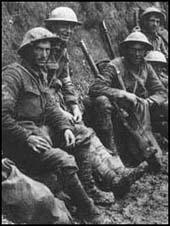Smokeless Powder

Military commanders had been complaining since the Napoleonic Wars about the problems of giving orders on a battlefield that was swathed in thick smoke from the gunpowder used by the guns. In 1886 Paul Vieille invented a smokeless gunpowder called Poudre B. Made from gelatinized nitrocellulose mixed with ether and alcohol, it was passed through rollers to form thin sheets, which were cut with a guillotine to flakes of the desired size. Vielle's powder was used in the Lemel rifle that was adopted by the French Army in the late 1880s.
The French Army was the first to use Poudre B but it was not long before other European countries followed their example. Vieille's powder revolutionized the effectiveness of small guns and rifles. Firstly because practically no smoke was formed when the gun was fired and secondly because it was much more powerful than gun powder, giving an accurate rifle range of up to 1000 yards.
In 1887 Alfred Nobel also developed a smokeless gunpowder. This eventually became known as cordite, a powder easier to handle and more powerful than Poudre B.
